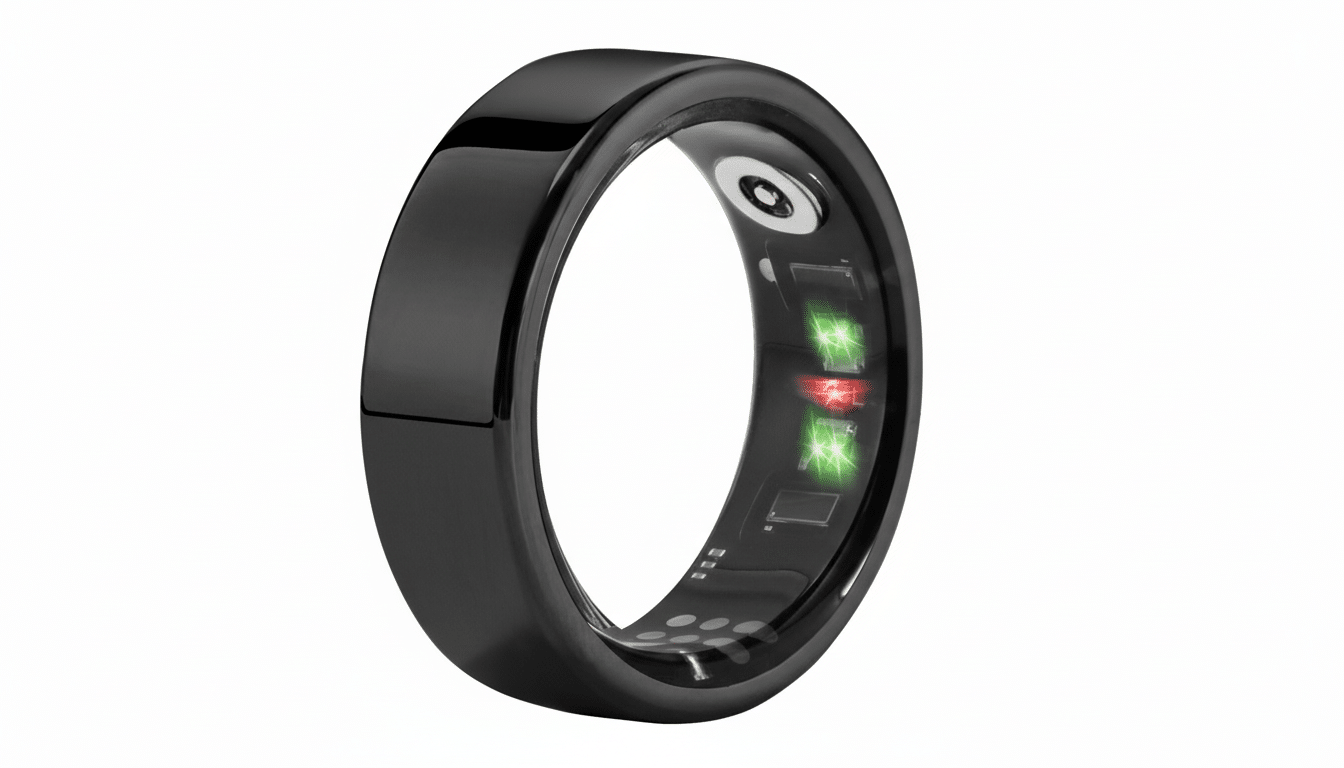Two veterans of Meta’s interface teams have launched an ambient AI device that you wear on your finger. Their start-up, Sandbar, is poised to release the Stream, a smart ring that it calls “a mouse for voice,” enabling people to take inaudible notes, talk to an assistant and control music without touching a phone.
A Wearable Designed for Subtle Recording
Stream perches on your dominant hand’s index finger and combines a touch surface with beamforming microphones. By default, the mic is muted; you press and hold to talk, a setting that helps avoid hot-mic mishaps. In demos, the mic captured low-volume speech and transcribed it in a companion iOS app, part of a trend toward discreet note-capture tools like Wispr Flow and Willow.
- A Wearable Designed for Subtle Recording
- An A.I. Journal That Writes Itself and Organizes Notes
- Control Media You’re Listening To Without Taking Your Phone Out
- Pedigree Behind the Hardware and Team Leadership
- Market Reality Check for AI Wearables and Rings
- Data Privacy Postures and Data Portability
- Pricing, Availability and Backing for Stream
- The Bottom Line on Stream’s Interface-First Smart Ring

There will be haptics to confirm a note was captured so you can add (say) a to-do, log an idea or tick off an item without having to look at a screen. And in noisy surroundings, you can pair headphones for private two-way audio with the assistant while keeping the phone tucked away in a pocket or bag.
An A.I. Journal That Writes Itself and Organizes Notes
Sandbar’s app seems to act as a living journal. As you write, an on-device and cloud-assisted system transforms thoughts into editable notes, sorts them by topic and surfaces reminders. The interface is pinch-to-zoom, sliding from today’s entries to a multiweek overview. There’s also a layer of personalization that calibrates the assistant’s vocal timbre to be familiar, an effort to minimize the cognitive friction when we’re interacting with something in short spurts, many times a day.
Crucially, Sandbar casts Stream not as a friend but an interface—a thing you use in order to share ideas and not a character that becomes your pal. That framing is important in a market that personality-first AI gadgets have had trouble showing up for daily use.
Control Media You’re Listening To Without Taking Your Phone Out
The ring’s flat touch surface is a media controller: you tap to play and pause, swipe to skip a track, or use other simple gestures to control volume. A number of headphones have such shortcuts, but it can be convenient to control things with your finger when you’re cooking, commuting, or wearing gloves that make in-ear taps annoying.
Pedigree Behind the Hardware and Team Leadership
CEO Mina Fahmi, who has a background in human–computer interaction at Kernel and Magic Leap, and CTO Kirak Hong, who worked at Google before his time with CTRL-Labs, lead Sandbar. The two met at CTRL-Labs, which Meta acquired in 2019 in its big entrance into neural interfaces. You can see that lineage in the ergonomics of the Stream: It switches on with a series of short, deliberate gestures, and powerful software minimizes screen use.
The product joins a burgeoning voice-AI hardware space that has seen pendants, pins and wristbands — from the likes of Friend and Limitless to Taya’s — and even Bee’s wristband fold into Amazon. Rings are becoming a favorite bet, for being unobtrusive and always on you, unlike face-worn tech that’s socially acceptable in fewer places.

Market Reality Check for AI Wearables and Rings
Wearables are still a huge, fast-moving category. IDC projects that media wearables will exceed 500 million units in annual shipments, with headphones and watches dominating the market and rings as a tiny but growing slice. The high-pitched transportation of products like the Samsung Galaxy Ring has put attention on the form factor, even as voice-first devices compete to become the easiest way possible to offload thoughts while traveling.
Nevertheless, AI gadgets have had a checkered history. One high-profile wearable effort was recently gobbled up by a larger hardware company, while another is riding on software updates to revive engagement. Stream will have to justify that its ring-first ergonomics offer a clearer day-one value than pendants or pins — and that it continues as models and platforms evolve.
Data Privacy Postures and Data Portability
Users have control on lower tiers, and there’s encryption in transit and at rest.
The company eschews walled gardens and touts export options to tools like Notion so notes do not get stranded. That stance is all the more important as consumers become suspicious over how AI data is handled and about vendor lock-in.
Pricing, Availability and Backing for Stream
Preorders run for $249 and gold units for $299, with shipments scheduled to begin next summer. Early purchasers will receive a free digital Pro subscription for the first three months and a subsequent $10 monthly fee, which grants unlimited chats/notes and early feature access.
Sandbar has raised $13 million from True Ventures, Upfront Ventures and Betaworks. True Ventures partner Toni Schneider, previously a skeptic of standalone AI devices, supported the team after realizing Stream’s more pragmatic interface-first approach — a sign investors find an asynchronous wedge in a noisy space.
The Bottom Line on Stream’s Interface-First Smart Ring
Stream turns three daily activities — writing notes, ticking lists and tapping music — into one finger gesture. If Sandbar can make interactions so swift, quiet and dependable, the ring could elevate voice into a first-tier interface without having to vie with the smartphone for attention. The next few months will determine whether that “mouse for voice” analogy clicks.

